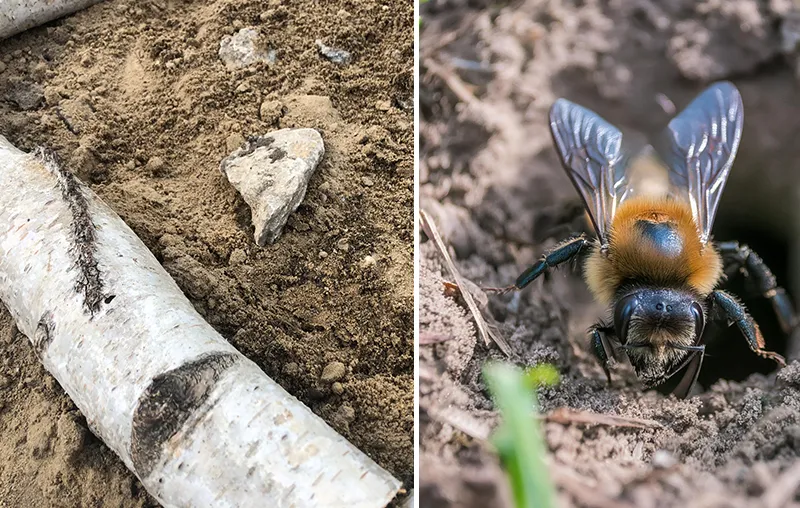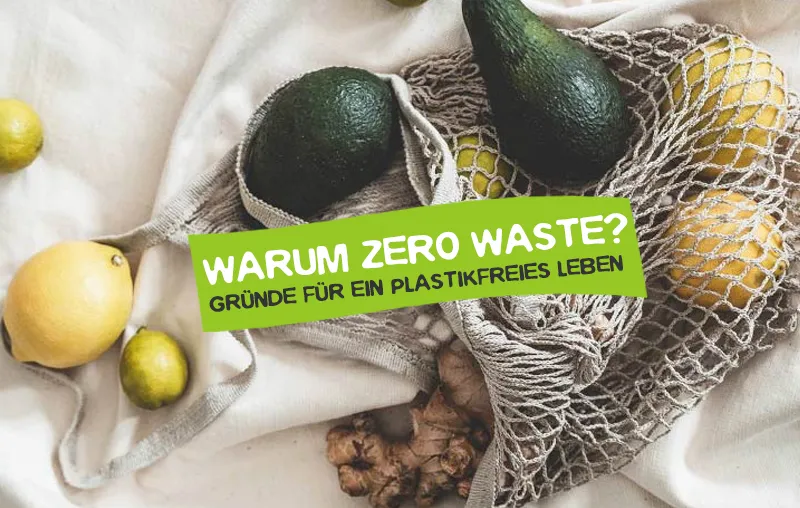Do you want to create a sandarium and build a nesting place for wild bees in your garden? Then you've come to the right place! Bee mortality is omnipresent. More and more hobby gardeners and balcony owners are therefore putting up bee hotels. However, the products from DIY stores are often put together incorrectly and are therefore ecologically worthless for the insects. What's more, around 75 percent of all wild bees nest in the ground!
A fact that is prompting more and more people to install a so-called sandarium, i.e. an artificial, sandy nesting area for wild bees and other ground-dwelling insects, in their own homes. bee friendly garden to create. However, there are a few things to bear in mind to ensure that it is accepted by the animals.
In this article, I would therefore like to show you step by step how to easily build an effective sandarium. In addition to the building instructions, you will also receive motivating benefits, the necessary materials, the ideal location and beneficial planting suggestions. Let's go!
Here you can find a short overview in advance:
Reasons: Why should everyone build a sandarium?
A sandarium is a must in every Natural garden! But why? In this paragraph I would like to mention a few important advantages that should motivate you to build a sandarium.
It needs Hardly any materialis really Built quickly and stress-freebasically requires No care and has an even greater, positive effect for the insects. And: Wild bees all have no stingers, sodass du auch keine Angst vor den Bienen haben musst. 😉
But of course there are also a few deeper motivesthat you should definitely know. I have compiled a list of important keywords for you here:
- Promote biodiversity (Create nesting site and habitat, Stop species extinction)
- Plant pollination favor (higher crop yields, global food security)
- Protecting endangered species (63 percent of 560 wild bee species are considered endangered1)
- Beautify your garden (rounds off any colorful planted wild corner in garden aesthetically)
- Promoting environmental education (Invite children and adults into the world of wild bees)
Materials: What do you need for a sandarium in the garden?
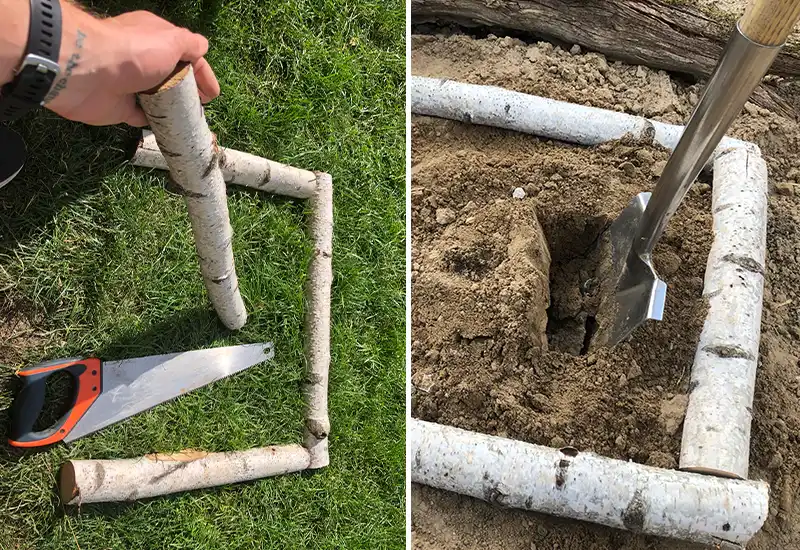
I've already hinted at it: you really don't need much material to build such a bee-friendly sand bed! Just a little Sand, some gravel, dead wood and/or natural stones as a border and a bee-friendly wild plant in the immediate vicinity.
The most important material is - unsurprisingly - sand! But which sand is ideal for the wild bees to build their nesting tubes in? It should unwashed, coarse, somewhat loamy and differently grained be - and Store moisture well can. Fine, unstable play sand is therefore absolutely unsuitable.
Just ask the Earthworks, quarry or rubble operations in your area.
As soon as you have the sand, you can add a small Do a soil test. Fülle dafür deinen feuchten Sand in einen alten Joghurtbecher und stelle ihn auf den Kopf, bis er trocknet. Bleibt der Sand auch in trockenem Zustand haften, passt alles! (Idee ist vom NABU 🙂 )
Location: What is the ideal place for a sandarium?
To ensure that the wild bees also move into your freshly created sandarium in the garden, you should not just place it anywhere.
It needs a sheltered from the wind, in a quiet, preferably full-sun location. It is best to align it to the south and build it at a slight angle so that the rainwater can run off downwards and seep away. The soil should be as described above, coarse sand be
It is also beneficial to use the direct Environment close to nature with native wildflowers and other wild bee-friendly plants.
Also like to place Some more deadwood nearbyas the earth-nesting wild bees gnaw it off and use it to seal their brood tubes.
Do you have too little space or no garden? No problem! You can also create a similar sandarium in a tub on the patio or balcony!
Planting: Which plants support a sandarium?
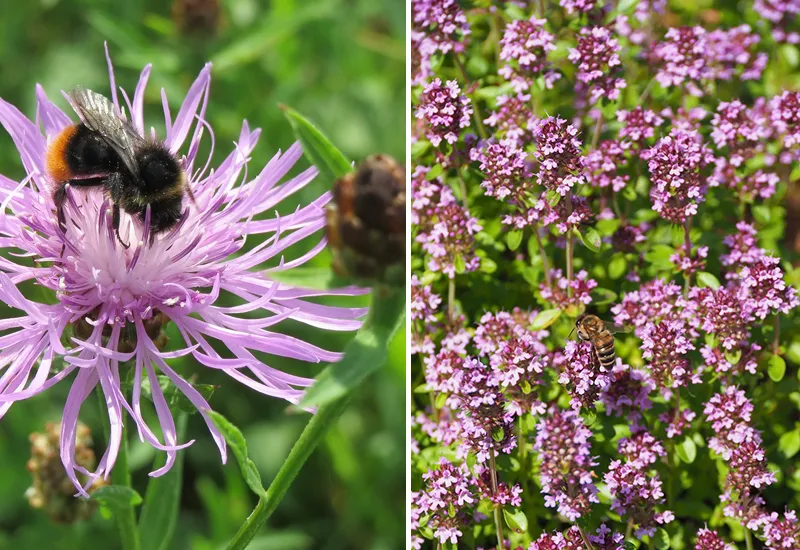
I've already hinted at it: if you want to build a really perfect sandarium, the plants around it should provide a wide range of food (pollen and nectar) for wild bees. The best way to do this is to use native, drought-resistant wildflowers and Flowering ground cover.
In a small sandarium itself you should only put a maximum of one small plant. The sand bed should ultimately remain free (and visible to the insects) as an attractive nesting site. In a larger sandarium, however, you can certainly place a plant here and there.
These plants complement a sandarium, for example, quite perfectly:
- Sand thyme (Thymus serpyllum; important for 41 wild bee species, 2 specialized)
- Common viper's bugloss (Echium vulgare; 39/2)
- Hawkweed (Hieracium umbellatum 78/16)
- Round-leaved bellflower (Campanula rotundifolia; 38/12)
- Scented scabiosa (Scabiosa canescens; 14/5)
- Knapweed (Centaurea stoebe; 97/14)
- Feldmann litter (Eryngium campestre; 33/7)
Bees need our help! However, the plants mentioned also have a high, ecological value for other insectssuch as caterpillars, butterflies, beetles and hoverflies.
Tip: If you like, you can also decorate your garden with a few bee-friendly wild roses or bee-friendly berries supplement. You can find my recommendations in the linked blog articles.
Work steps: How can I create a sandarium?
Are you motivated, have you gathered the materials and plants and found a suitable location for your sandarium? Then I would like to take this opportunity to Step-by-step instructions to the hand. The video will certainly help you a lot.
At Building my own small, sandy nesting area for wild bees in the garden, I basically proceeded as follows:
- Prepare location: Clear the ground of weeds and dig a hole at least 40×40 centimetres wide (of course much larger is also possible) and about 50 centimetres deep. The bees need this depth for their brood tubes.
- Set the framework: Create a wooden frame from dead wood or set a secure border with natural stones to delimit the sandarium.
- Fill with sand: Now you can pour in the sand and slope the surface slightly. Theoretically, this step can of course also be done before the frame is set.
- Incorporate gravel/stones: Simply stir them into the sand with a spade and leave a few on the surface. The small stones create stability and offer the wild bees additional hiding places.
- Carry out planting: In the final step, you can plant the surrounding area. For example, scatter native wildflowers and add the plants described above.
Check from time to time that the sand area remains clear. And if your sandarium is to be somewhat largerthen you can also create additional structures for nesting and hiding with other plants for nutrient-poor soils, as well as some natural stones and old wood.
Building a sandarium for bees, made easy!
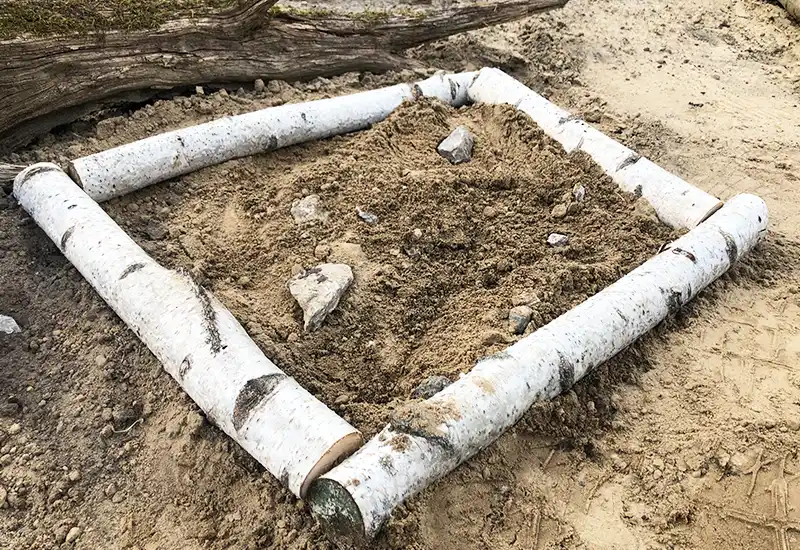
Now you have everything you need to create a buzzing, lively, sandy nesting place for wild bees which the small insects unfortunately find less and less in nature.
With this simple, but effective DIY project you promote the Biodiversity and contribute to the protection of wild bees - and because of their role in nature, also to the protection of us humans. At the same time, you are also building a natural, aesthetic highlight in your natural garden.
"If the bee disappeared off the surface of the globe, then man would have only four years of life left. No more bees, no more pollination, no more plants, no more animals, no more man."
Albert Einstein (more under Species protection quotes)
I hope I have been able to help you! Do you have any questions, tips or would you like to share your own experiences with building a sandarium for bees? Then I look forward to your comment!
Stay bee-friendly,

PS: Want to do even more for insects? Then take a look at how you can make a Create a pile of stones, a Bienentränke gestaltest or a Build your own beetle cellar. Have fun with the implementation.
References:
- WWF Germany: Wild bees highly endangered (as of 11.12.2023), available at https://www.wwf.de/themen-projekte/bedrohte-tier-und-pflanzenarten/wildbienen-stark-gefaehrdet. [04.07.2024]. ↩︎

